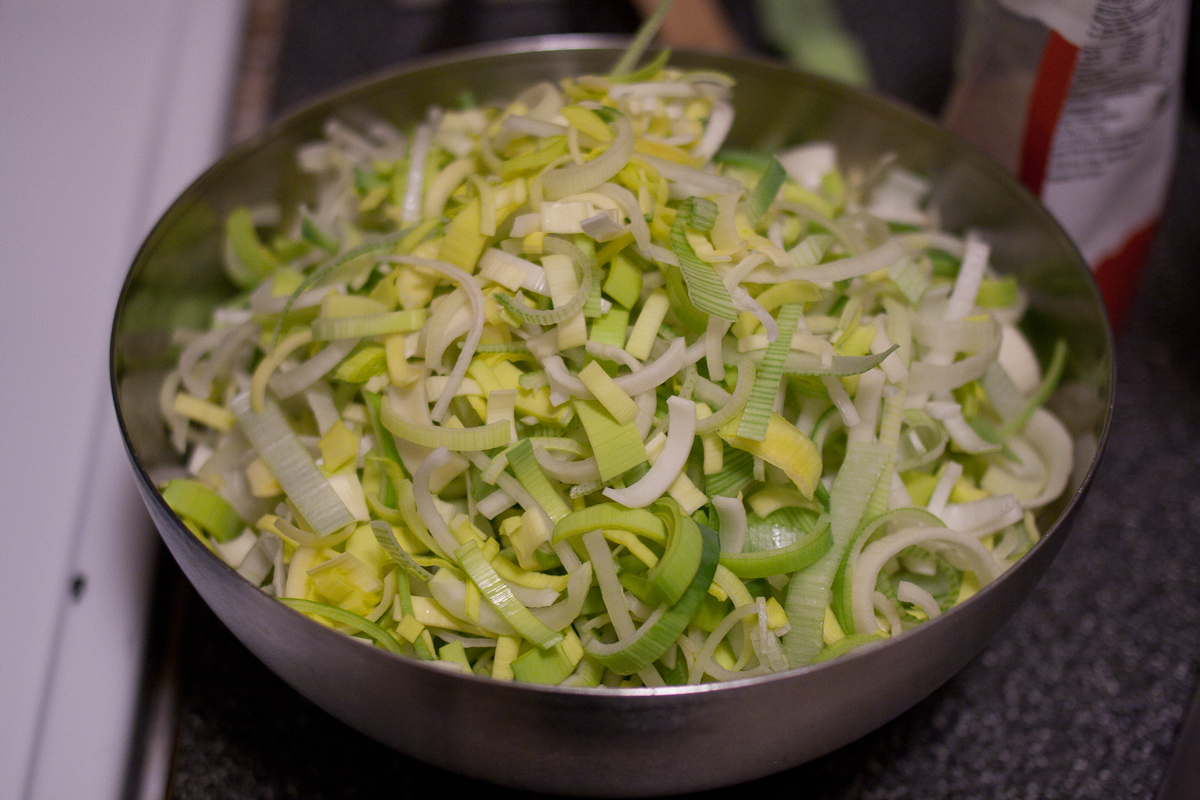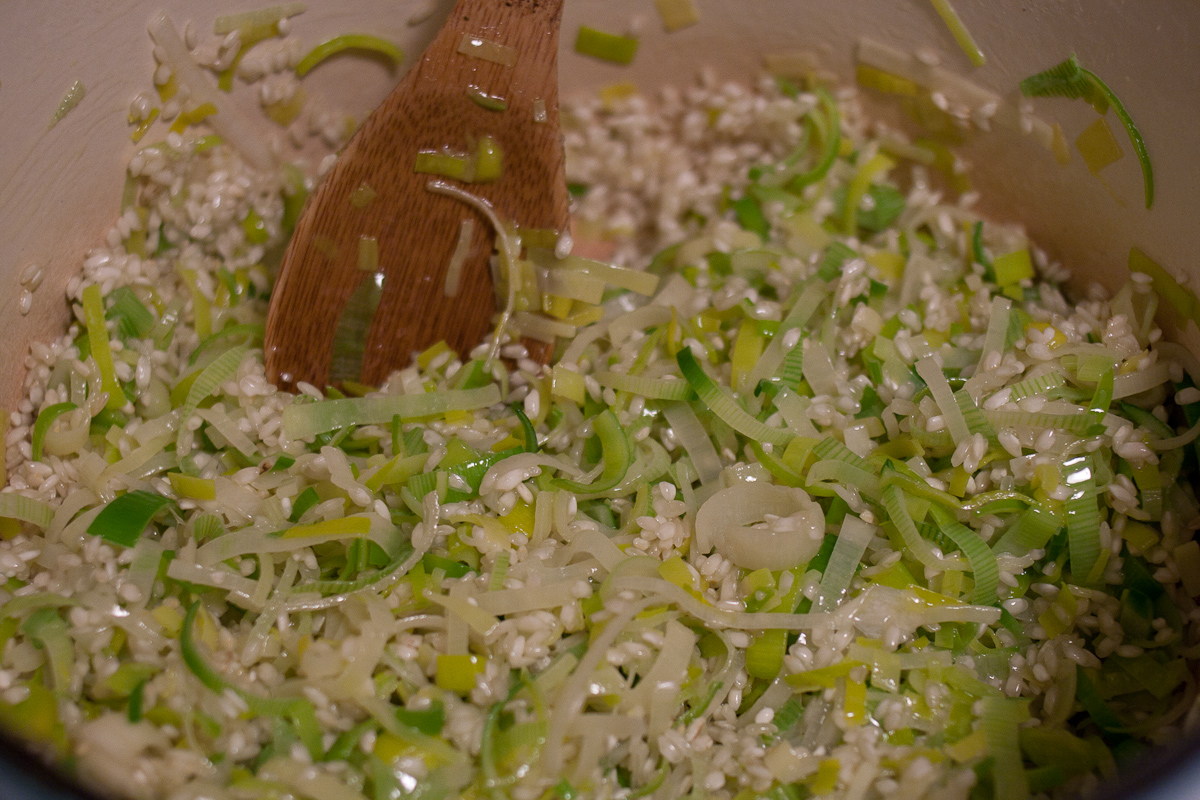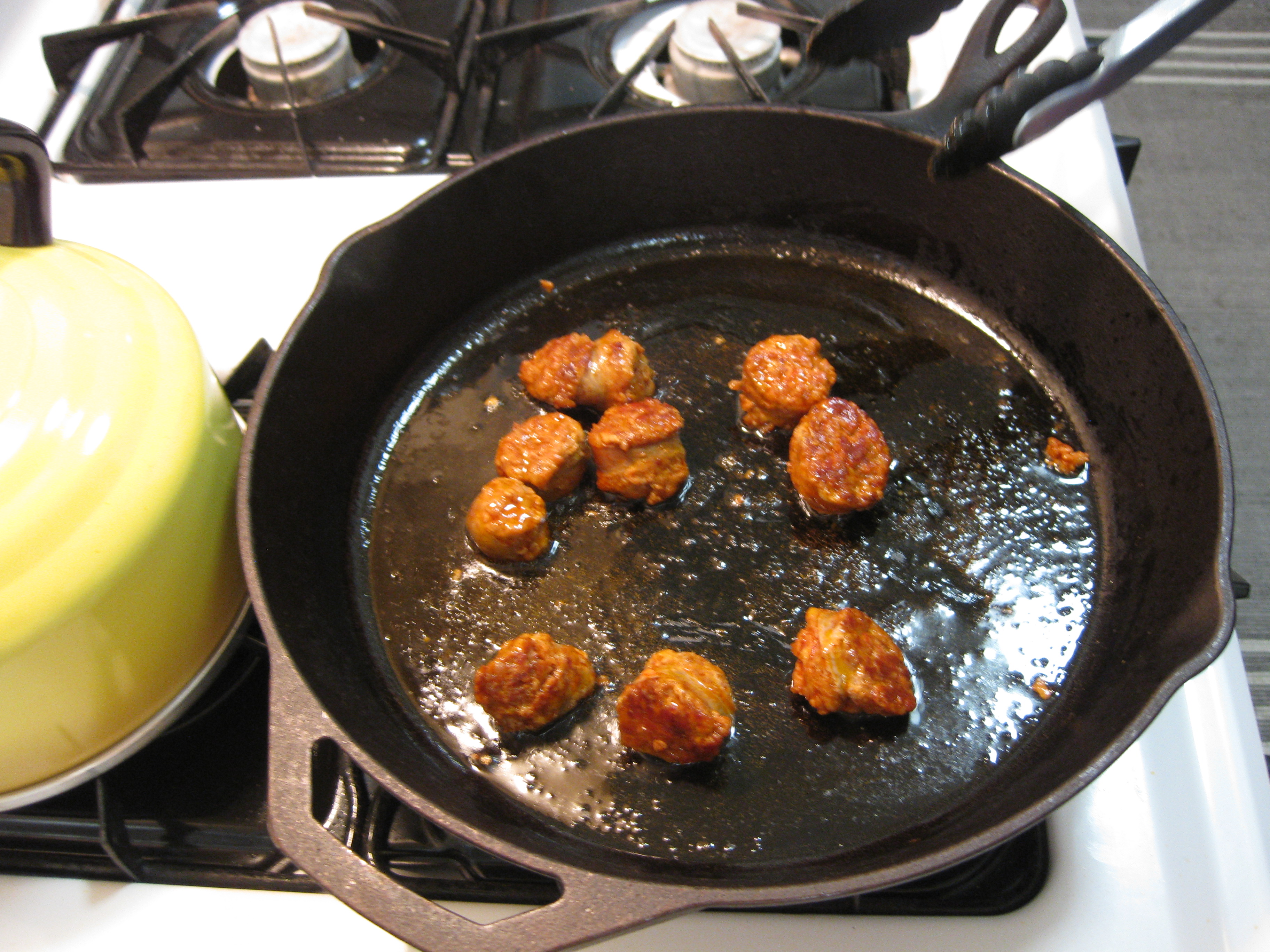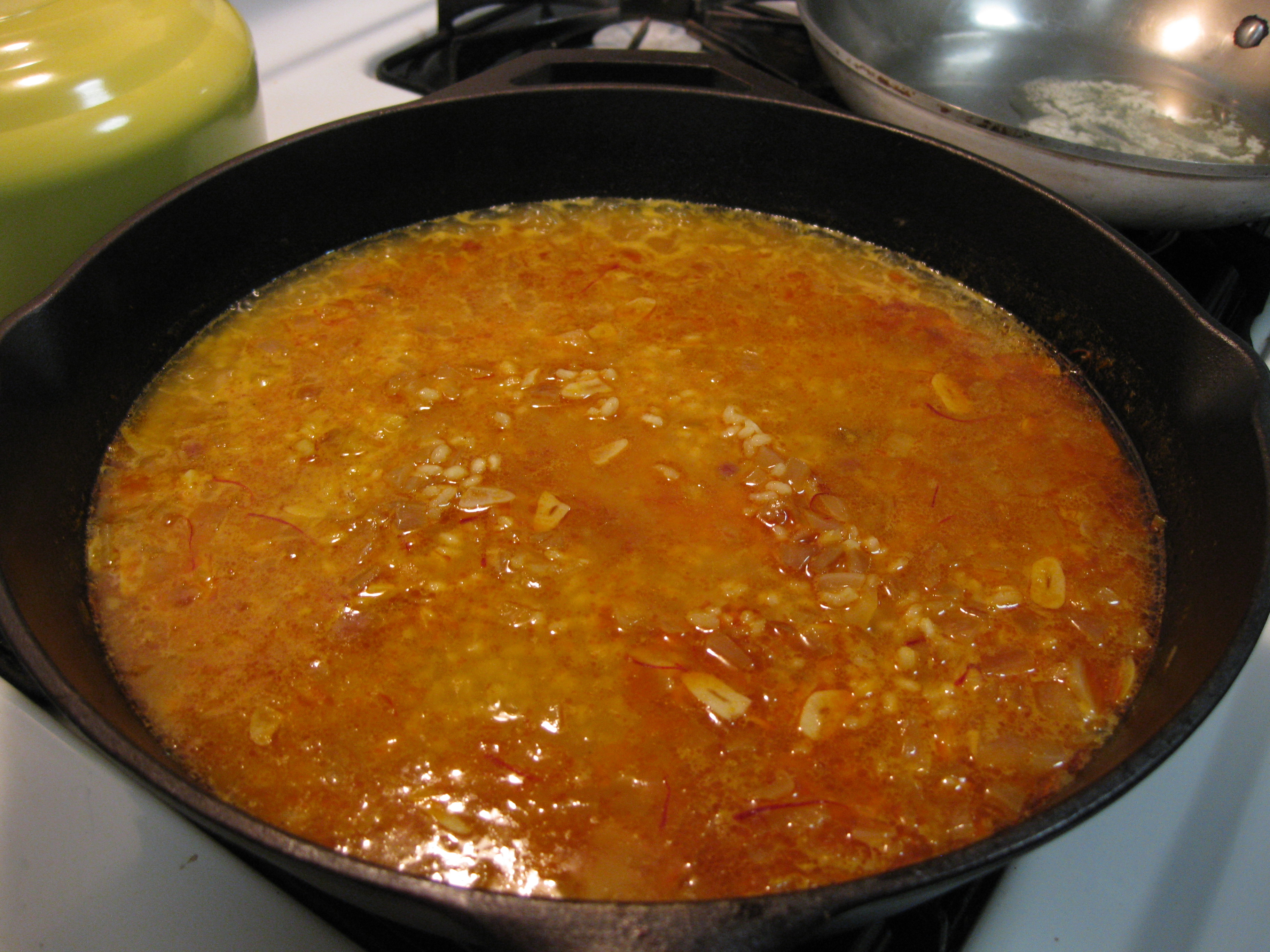You and tonkatsu have probably met each other’s acquaintance at your local sushi restaurant. It’s usually an option in a bento box of some kind, alongside other Americanized favorites—salmon teriyaki, vegetable tempura, California rolls. Like Argentine milanesa or Italian chicken parmesan, tonkatsu is basically a pounded piece of meat that is breaded, fried and served with sauce. It’s hard to go wrong.
We don’t do anything fancy with our tonkatsu. It is easy to prep and takes just 10 minutes to fry (and you can shallow fry it – no need to bust out the dutch oven and a liter of oil). We usually serve it in a large bowl with shredded cabbage, vinegar rice and a few garnishes picked up during the occasional visit to Japantown. It’s not traditional to serve tonkatsu with vinegar rice, but I love vinegar rice and it’s my kitchen. Plus it helps jazz up cabbage.
Tonkatsu
2 thin cut, boneless pork chops, pounded a bit (you could also use chicken)
1/4 cup flour
1 egg, beaten
1/2 cup panko bread crumbs
salt and pepper
high temp oil for frying (safflower, sunflower, or canola oil)
For Serving
Vegetable and Fruit Sauce (Japanese BBQ sauce)
Vinegar sushi rice (1 cup rice, 1/4 cup rice vinegar, 2 tablespoons sugar, 1 teaspoon salt)
Shredded cabbage, about 1/2 cabbage cut into thin slices (toss with some rice vinegar if you’re not making vinegar rice)
Pickled ginger (optional)
Togarashi (Japanese dried chili pepper, optional)
Cook your rice according to your rice cooker or the package directions. While your rice is cooking, make the sushi su by combining 1/4 cup rice vinegar, 2 tablespoons sugar and 1 teaspoon salt in a small saucepan and heating until the sugar and salt dissolve. Slice your cabbage into very thin slices and set aside. Then prep the pork.
Using a rolling pin or the flat side of a meat mallet, pound the pork cutlets until they are about 1/2 inch thick. Season well with salt and pepper. Then dredge the pork in the flour, then the egg, then the panko. Set aside or refrigerate if your rice still has a while left to cook.
When your rice is done cooking, heat 1/2 inch of oil in a heavy sauté pan or cast iron skillet. When the oil is hot (test by dropping a bit of panko into the batter. If it immediately starts to bubble, the oil is ready), add the pork to the pan. Cook 5 minutes per side, until the pork is golden brown. Remove from the pan and let drain on a plate with paper towels or a cooling rack. Cut into thin strips.
Add the sushi su to the rice and stir gently to distribute. Split the cabbage between two medium bowls. Top with some rice. Then top with the tonkatsu. Serve with Vegetable and Fruit sauce, togarashi, and pickled ginger.
-Emily





























